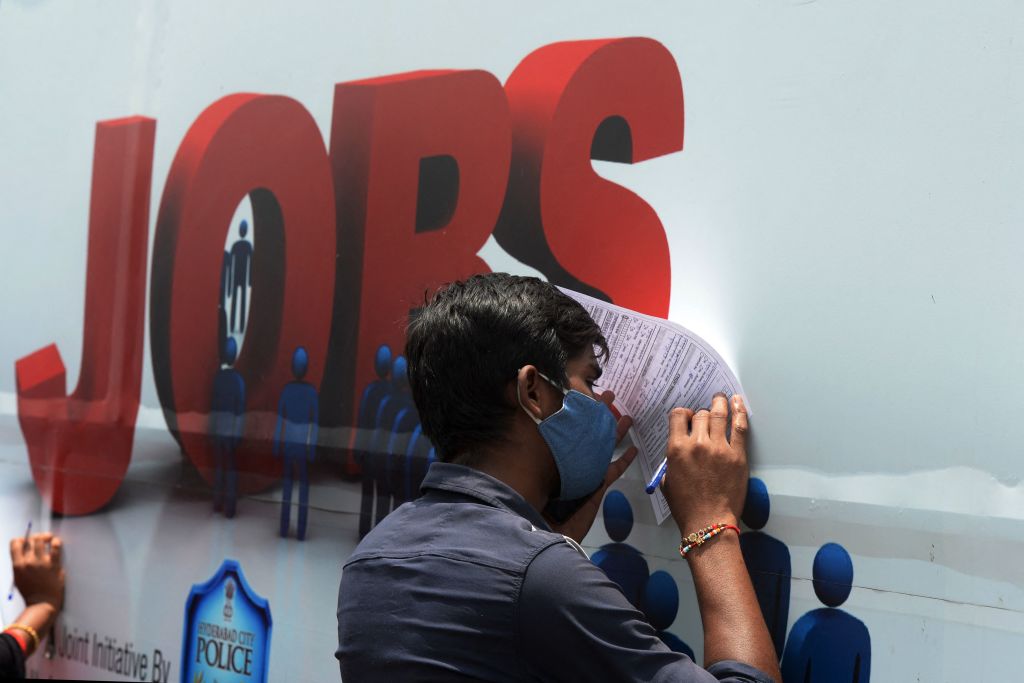- Monday, April 29, 2024

By: Shubham Ghosh
HERE are news in brief on Indian economy and business for Tuesday, April 16, 2024:
India’s unemployment rate is likely to decline by as much as 97 basis points by 2028 as the country’s economy hits the $5 trillion mark, fuelling a rise in employment, a new report said on Tuesday. Unemployment rate — the percentage of people in the labour force who are without jobs — is projected to fall from 4.47 per cent in 2024 to 3.68 per cent in 2028, the India Employment Outlook 2030 report by thinktank Observer Research Foundation (ORF) said. “India’s job market is experiencing a transformation as the country has become the world’s fastest growing large economy in the aftermath of the Covid-19 pandemic,” the report said. The country’s young population, whose median age is 28.4 years, holds a key to fuelling economic expansion.
The Indian government has announced an increase in windfall tax on petroleum crude from Rs 6,800 (£65) to Rs 9,600 (£92) per metric ton, effective Tuesday, as part of its fortnightly revision of the tax, Moneycontrol reported. Diesel and aviation turbine fuel will remain exempt from the tax, maintaining a zero rate. On April 4, the windfall tax rose from Rs 4,900 (£47) to 6,800 per metric ton. The tax was initially implemented in July 2022 to regulate private refiners’ overseas fuel exports. Last month, the finance Ministry raised the windfall tax on the sale of crude oil produced domestically to Rs 4,900 per tonne.
The International Monetary Fund on Tuesday raised India’s growth projection to 6.8 per cent from its January forecast of 6.5 per cent citing bullish domestic demand conditions and a rising working-age population. With this, India continues to be the fastest growing economy of the world, ahead of China’s growth projection of 4.6 per cent during the same period. “Growth in India is projected to remain strong at 6.8 per cent in 2024 and 6.5 per cent in 2025, with the robustness reflecting continuing strength in domestic demand and a rising working-age population,” said the latest edition of the World Economic Outlook released by the IMF ahead of the annual spring meetings of the IMF and the World Bank.
India’s Bengaluru airport registered a record number of 37.53 million passengers traveling during the financial year 2023-24. The airport also transported 439,524 metric tonnes (MT) of cargo through its terminal during the same time. The airport registered 15 per cent passenger traffic growth in 2023-24 on a yearly basis. In a statement released by the airport authorities, it was revealed that during 2023-24, the airport played host to 32.86 million domestic passengers and 4.67 million international passengers, highlighting its significance as a crucial gateway for both domestic and international travel.
India is poised to sustain its current pace of road construction, adding up to 13,000 kilometers by March 2025, reflecting an annual growth of 5-8 per cent, according to ICRA, the Indian arm of Fitch Ratings, Reuters reported. Since prime minister Narendra Modi assumed office in 2014, India has constructed approximately 90,000 kilometers of national highways, nearly doubling the previous decade’s output, as per government data. Modi is championing India’s road infrastructure as a key achievement in the ongoing election campaign. Capital expenditure on roads surged to Rs 2.4 trillion (£23 billion) in 2022-23 from Rs 510 billion (£4.8 billion) in 2013-14. Despite a sluggish start last year due to heavy rains, road construction gained momentum since September and is expected to persist, ICRA stated.
(With agencies)
![]()